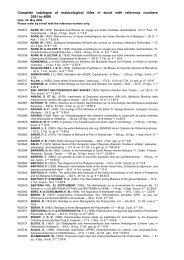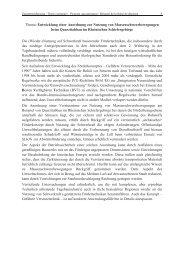Madeira Canary Islands Azores – Fishes Dr. Peter Wirtz
Madeira Canary Islands Azores – Fishes Dr. Peter Wirtz
Madeira Canary Islands Azores – Fishes Dr. Peter Wirtz
You also want an ePaper? Increase the reach of your titles
YUMPU automatically turns print PDFs into web optimized ePapers that Google loves.
Usually silvery but they can also be black, completely or partially yellow and bearing a checker-board pattern.<br />
Sea chubs feed on plants which they digest with the help of gut bacteria. Photo top right <strong>Peter</strong> <strong>Wirtz</strong>.<br />
<strong>Dr</strong>ums (Sciaenidae)<br />
<strong>Canary</strong> drum (Umbrina canariensis) photo bottom right<br />
Fusca drum (Umbrina ronchus) photo bottom<br />
Up to 70 cm long. <strong>Canary</strong> <strong>Islands</strong>. 10 <strong>–</strong> 300 m depth.<br />
<strong>Dr</strong>ums are night-active animals which hide in dark places during the day. Both species have a small barbel on<br />
the chin. They can be told apart easily by their different colours. Photos <strong>Peter</strong> <strong>Wirtz</strong><br />
94<br />
Damsel fishes (Pomacentridae)<br />
Atlantic Damselfish (Chromis limbata)<br />
Up to 14 cm long. <strong>Madeira</strong>, <strong>Canary</strong> <strong>Islands</strong>, <strong>Azores</strong>. 5 <strong>–</strong> 45 m depth.<br />
Damsel fishes are a family with many different species, among them the clown fishes of the tropics. At<br />
<strong>Madeira</strong>, the <strong>Canary</strong> <strong>Islands</strong> and the <strong>Azores</strong>, there are only two species, this one and the one on the next page.<br />
The Atlantic Damselfish forms big swarms over rocky bottoms and feeds on plankton. It has long been<br />
confused with the Mediterranean Damselfish (Chromis chromis). The colour of the juveniles is one of the<br />
many differences: they are blue in the Mediterranean damselfish, green in the Atlantic damselfish (insert<br />
below). Juveniles like to hide between the spines of long-spined sea urchins. During the spawning season,<br />
males defend a piece of rock surface and court females with conspicuous “signal jumps”. The females deposit









